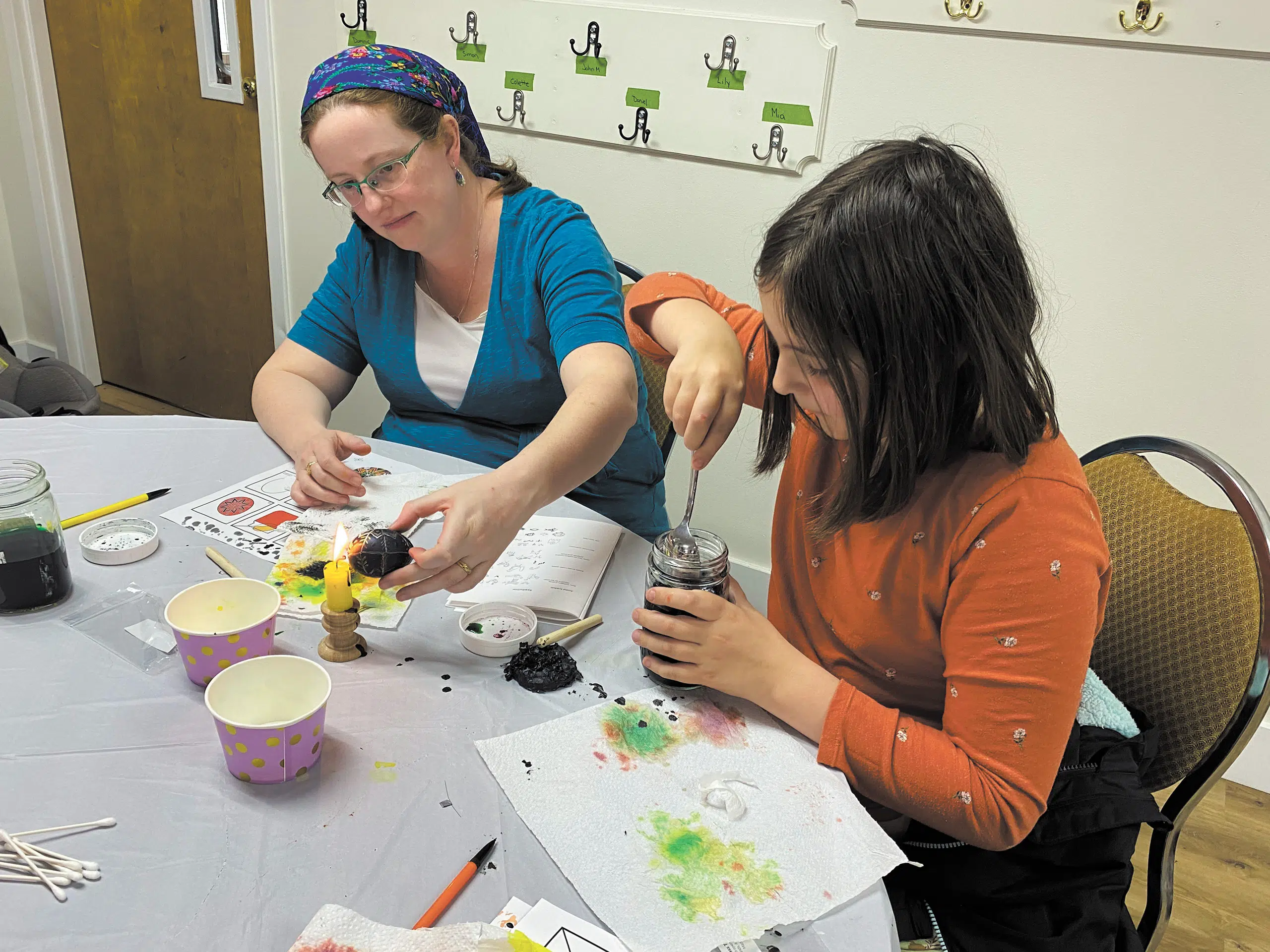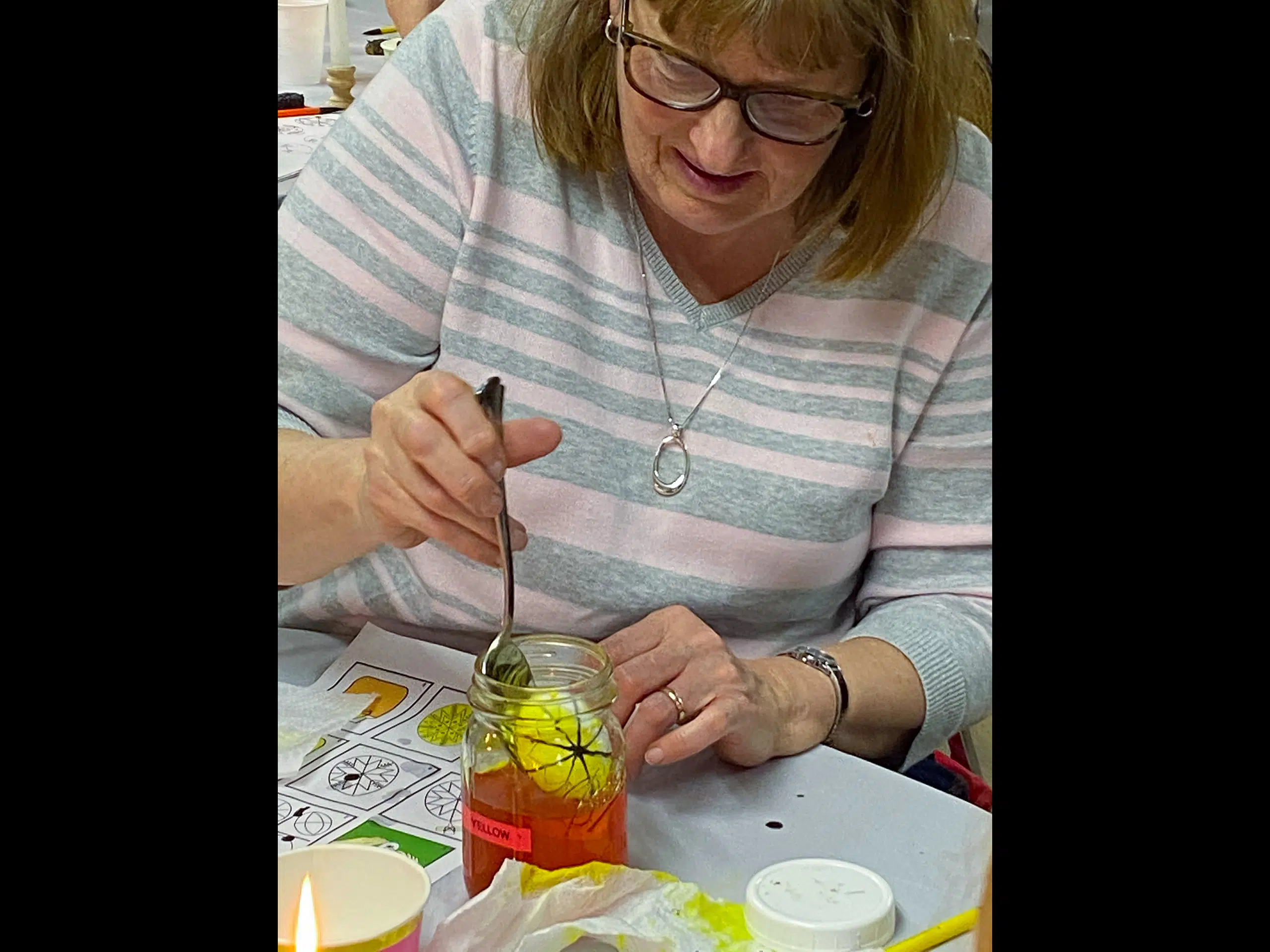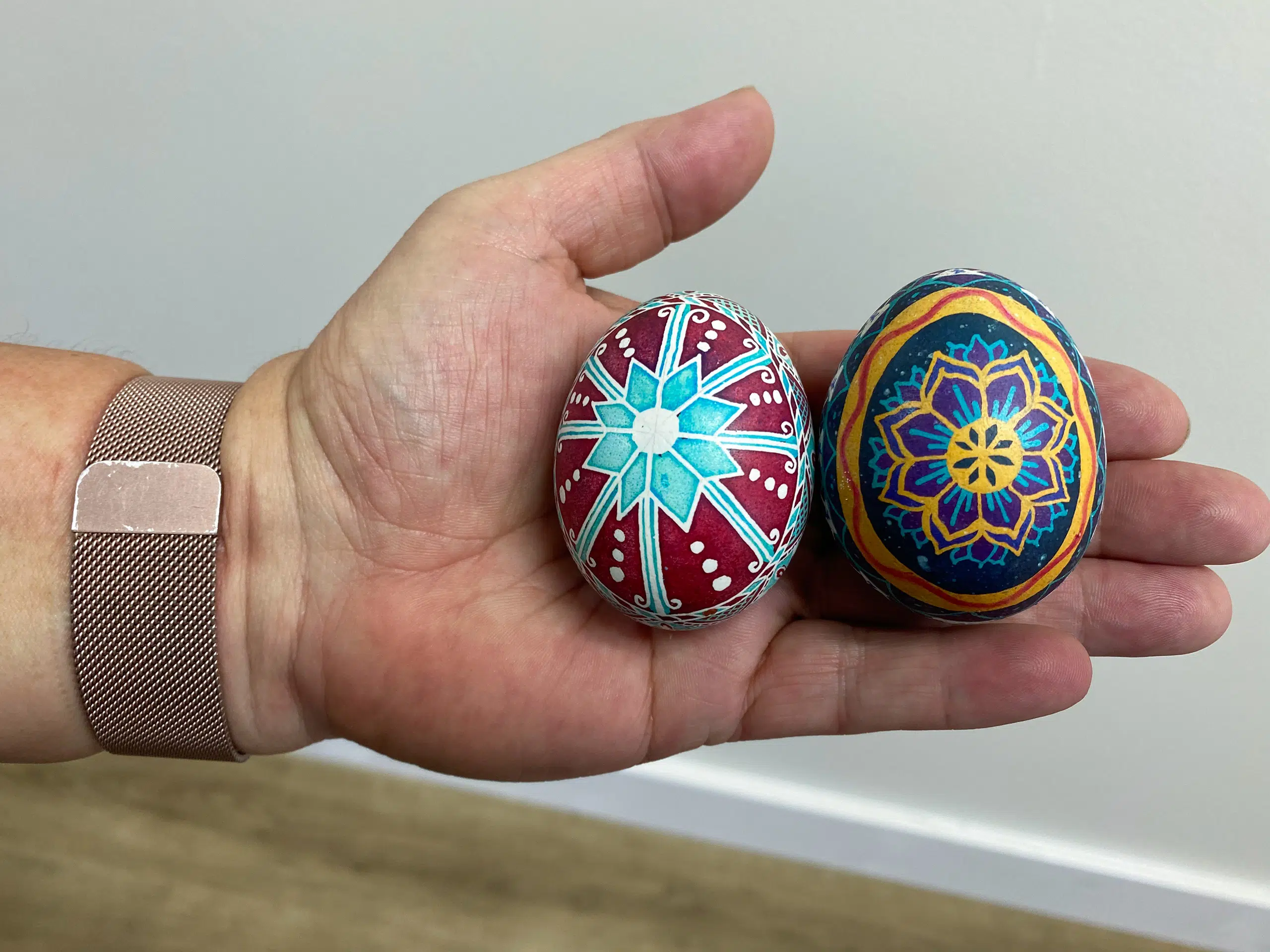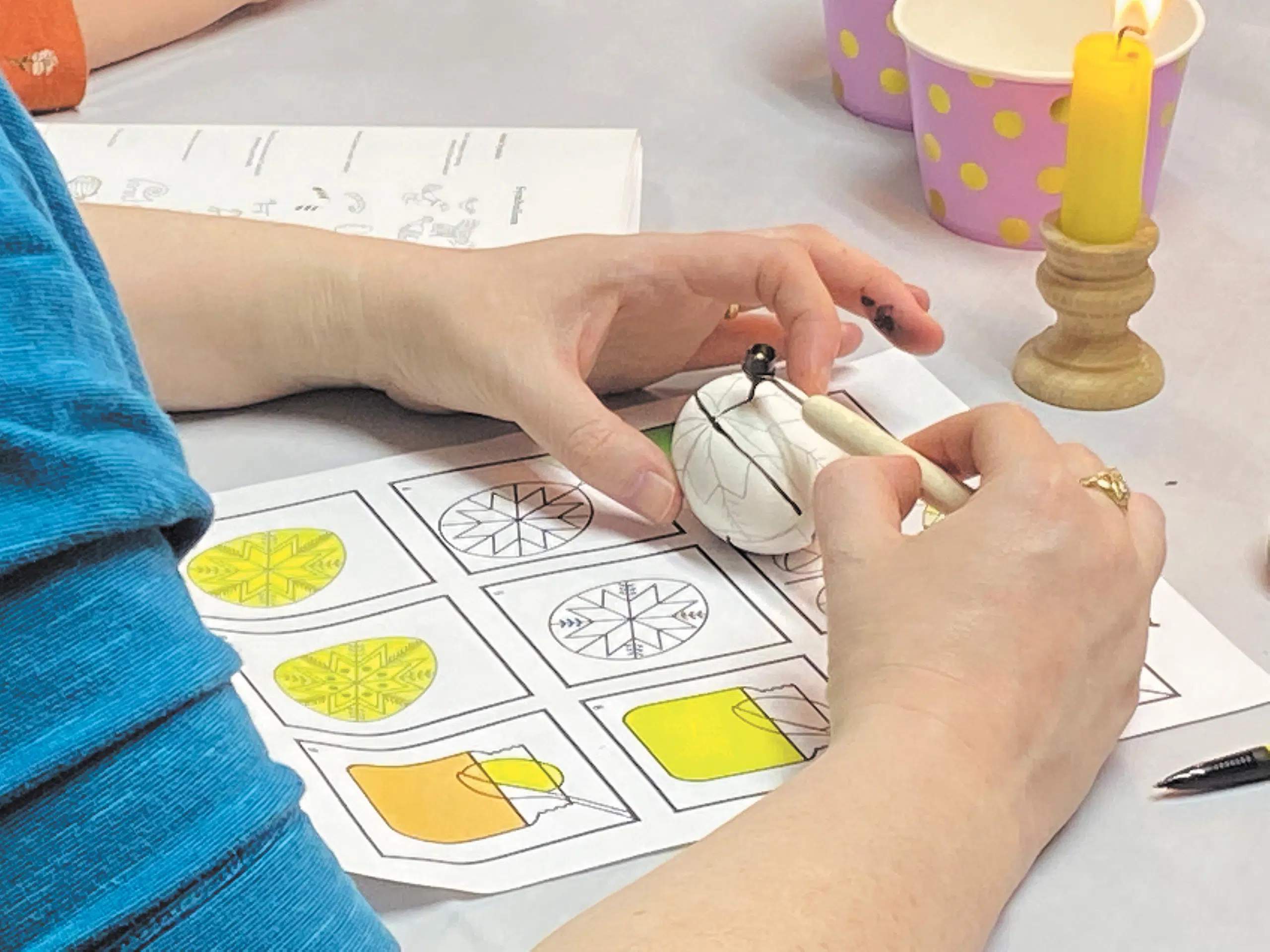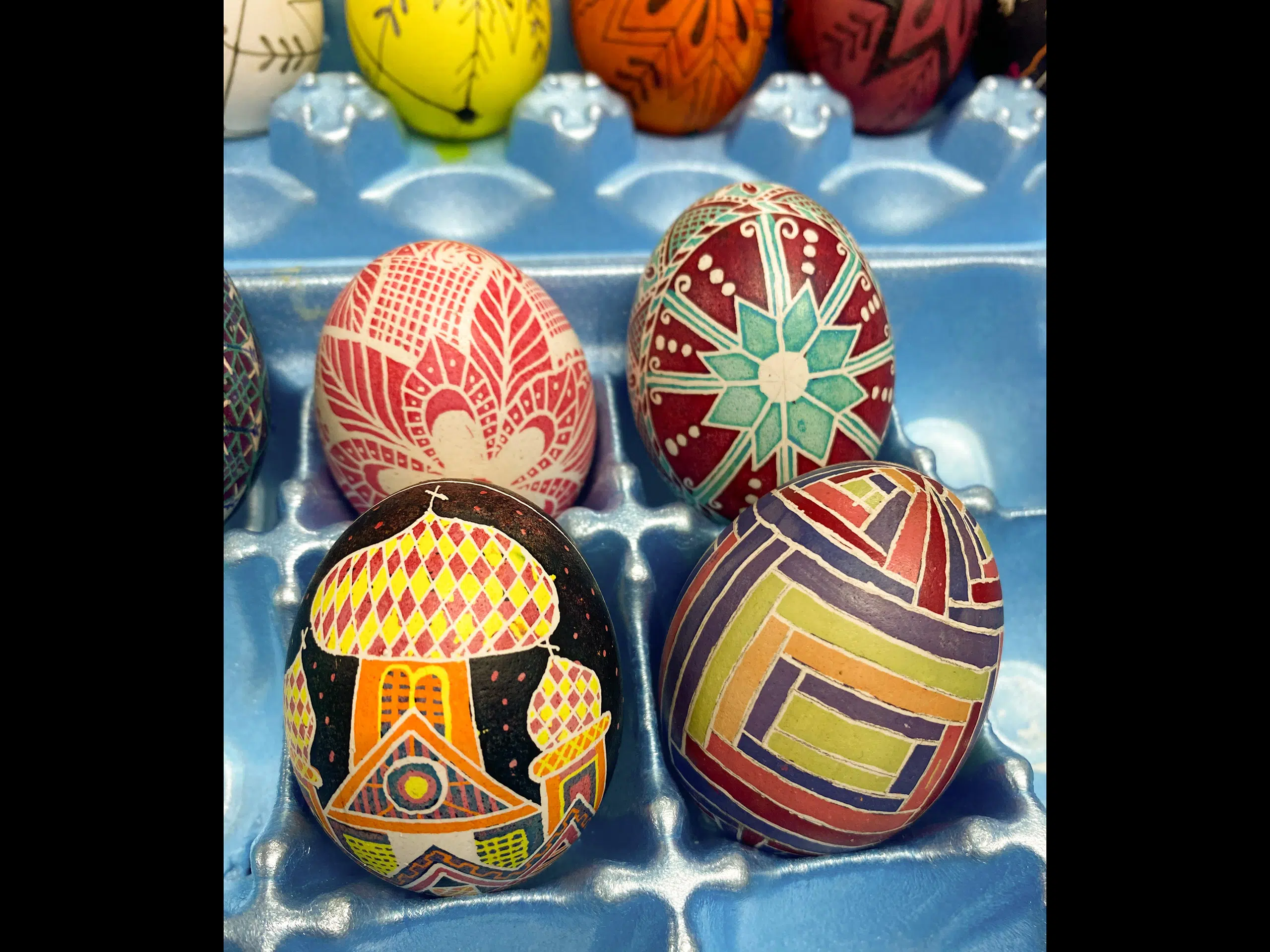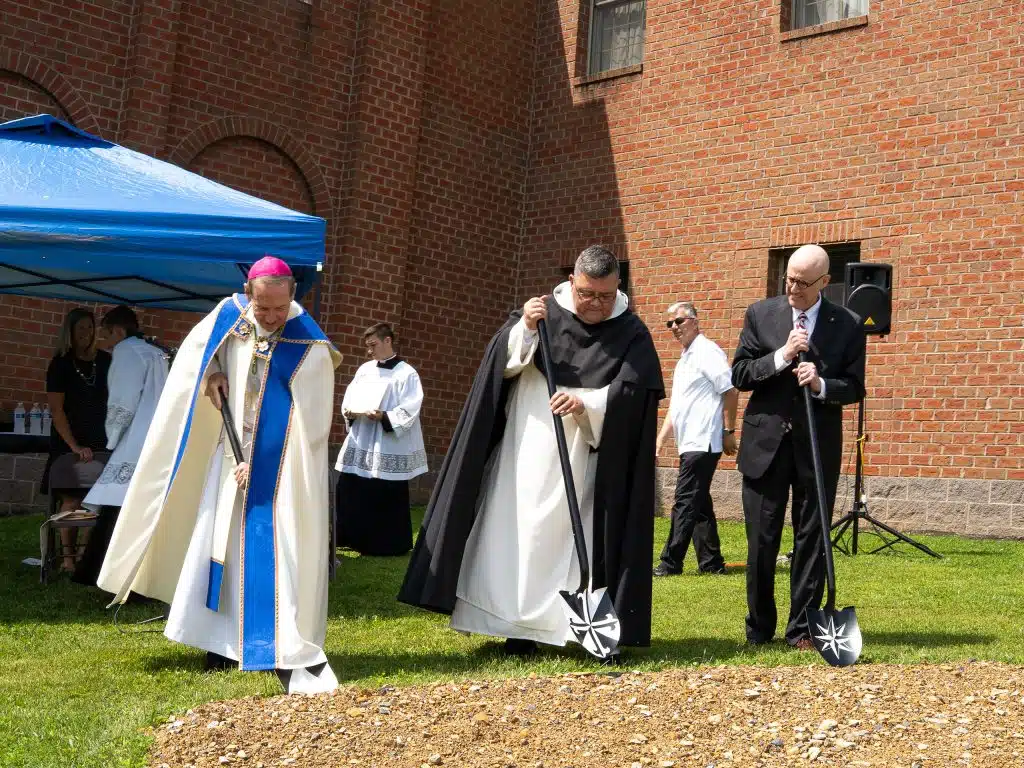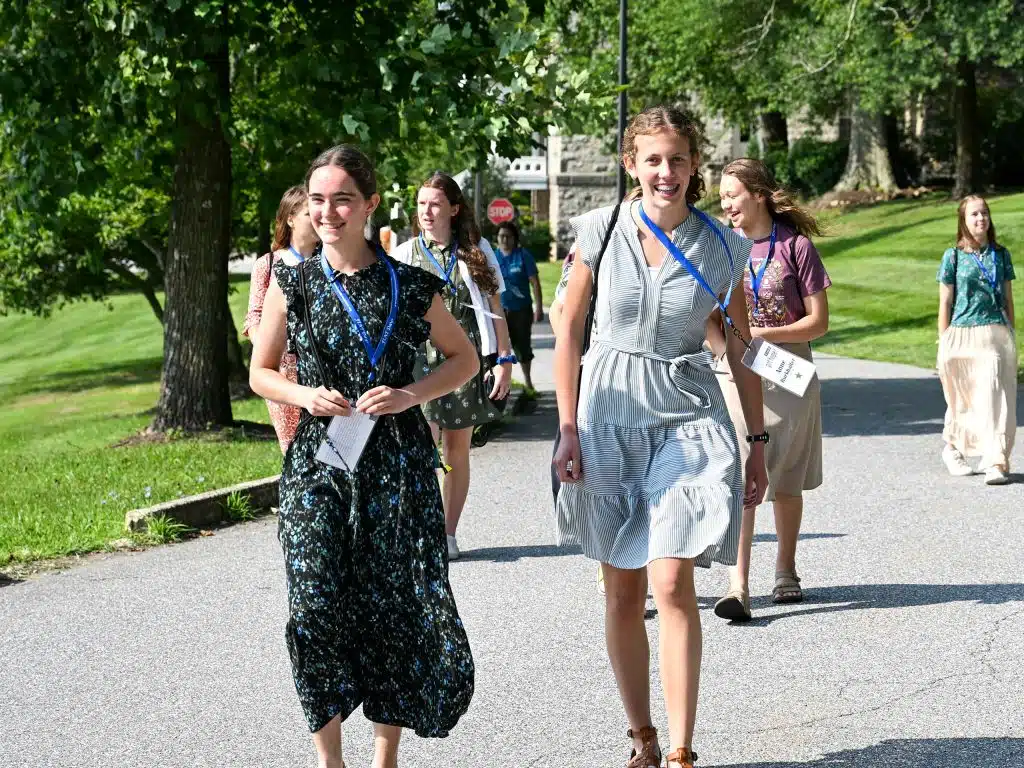At Sts. Joachim and Anna Ukrainian Catholic Church in Front Royal, Therese Fedoryka led approximately 50 parishioners through a workshop March 20 to decorate their own pysanky eggs, a Ukrainian tradition popular in Polish cultures as well.
Before Ukraine embraced Christianity in approximately 988, it was primarily a pagan nation. One longstanding tradition adapted to the nation’s newfound faith was the creation of intricately decorated eggs, an art form sometimes referred to as “pysanky,” which stems from the verb “pysaty,” meaning “to write.”
After preparations including the use of a special stylus to extract yolk through the top of the egg, patterns are traced in pencil. Then a combination of hot wax, colorful dyes, finishing with a candle flame and an extraordinary amount of patience yield the finished product.
